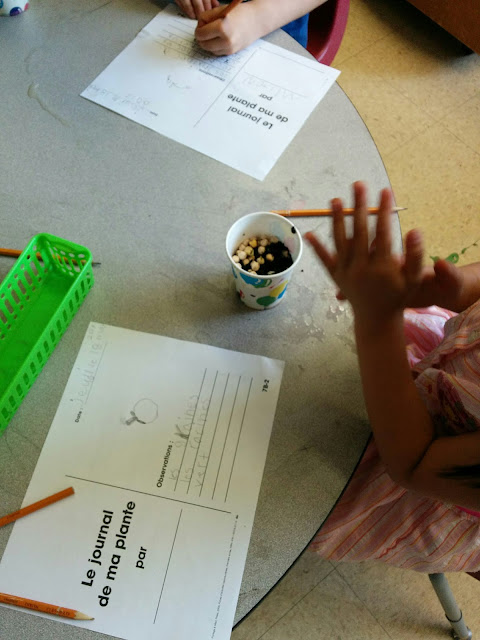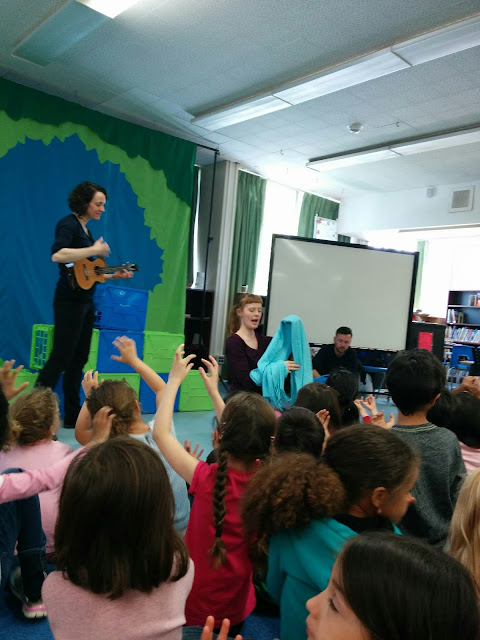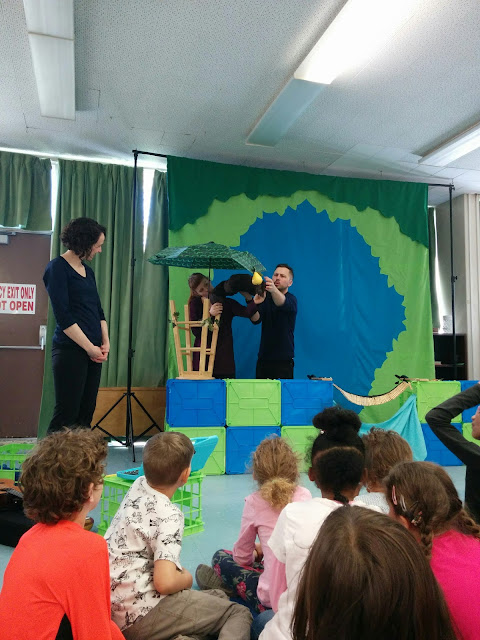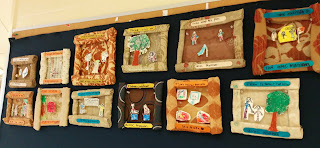In math, we finished our discussions of the concept of "area" with an activity using pattern blocks. Rather than measuring area with them, we made equations with them to express the relationships between different shapes in terms of area. The students used the symbols <, >, +, - and = and traced the outlines of pattern blocks to make pattern block equations.
Then we went on to talk about length and width, or linear measurement. Using our refreshed body part vocabulary, the kids worked in pairs to measure each other's hands, fingers, feet, etc. using snap cubes. They first had to estimate the length and then measure the length.
Next we measured things in our classroom using various things as units (dominoes, pencils, crayons, chain links and popsicle sticks). Groups of 2-4 students worked together to first estimate and then measure the objects as accurately as possible.
We also did a little art project based on a student's request that we make collages with natural materials. The kids went looking on the school grounds for things that had once been living but were now dead. They used those materials to make little pine cone creatures. We added googly eyes for fun, but otherwise the kids only used materials they had picked up off the ground at school.
The kids also made a second entry in their observation journal for their pea plants. These are all growing well! Most of the potatoes are sprouting many roots and shoots, but a couple have not responded and there's been great curiosity as to reasons why not. We will start our experiments on the potato plants soon!
Finally, it is worth mentioning the excellent Spanish Assembly on Friday, in which many from our class performed. The music and dance were upbeat and fun, and the students who take Spanish were clearly proud of their performance.



























































